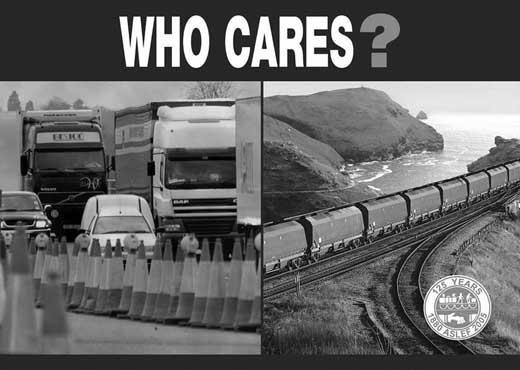get freight off the roads
WORKERS, JULY 2005 ISSUE
The rail union ASLEF is to lobby parliament on 13 July in its campaign to get the bulk of freight transferred from road to rail as part of an integrated transport system. This makes sense on environmental, safety and cost grounds and is supported by a huge majority of the public. The road industry is pushing for longer and heavier lorries of between 60 and 84 tonnes, which would be unsuitable for most British roads and cause huge wear and tear. Recent research also indicates that HGVs only pay for around 65% of the costs they impose on society. A 40-tonne, 5-axle lorry causes over 10,000 times as much damage to road surfaces as the average car.
Lorries also exacerbate congestion. Transferring goods onto the average freight train would remove 50 heavy goods vehicles from the roads, while some trains could remove the equivalent of 120. Road traffic grew by 1.7% in 2004, HGVs by 2.9% and the distance goods travel has increased by 24% in the past 10 years. At any one time 30% of HGVs are running empty.
Lorries are also responsible for pollution: emissions from road freight transport increased by 59% between 1990 and 2002 and constitute 8% of Britain's carbon emissions. Rail produces only a tenth of CO2 emissions per tonne carried.
Although lorries only account for 7% of road traffic, they are involved in 22% of fatal crashes. They do eight times as much damage as cars in terms of fatalities per miles travelled, with each death costing £1 million in overall costs to society.
ASLEF is hoping the government will listen, in view of its commitment to "lead internationally on climate change". But it will take more than a lobby to get this government to invest in anything in Britain — it is far too preoccupied "leading in Europe".
